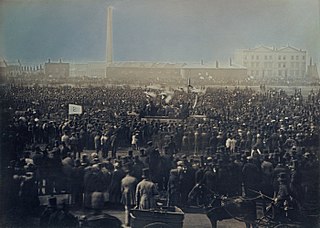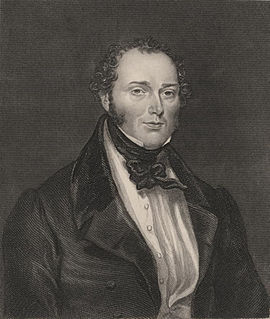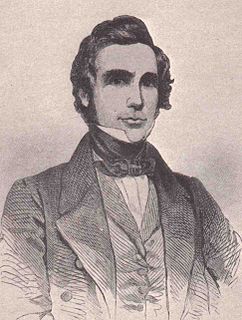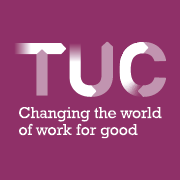Related Research Articles

Chartism was a working-class movement for political reform in Britain that existed from 1838 to 1857. It took its name from the People's Charter of 1838 and was a national protest movement, with particular strongholds of support in Northern England, the East Midlands, the Staffordshire Potteries, the Black Country, and the South Wales Valleys. Support for the movement was at its highest in 1839, 1842, and 1848, when petitions signed by millions of working people were presented to the House of Commons. The strategy employed was to use the scale of support which these petitions and the accompanying mass meetings demonstrated to put pressure on politicians to concede manhood suffrage. Chartism thus relied on constitutional methods to secure its aims, though some became involved in insurrectionary activities, notably in South Wales and in Yorkshire.

The Scottish Trades Union Congress (STUC) is the national trade union centre in Scotland. With 40 affiliated unions as of 2020, the STUC represents over 540,000 trade unionists.

Feargus Edward O'Connor was an Irish Chartist leader and advocate of the Land Plan, which sought to provide smallholdings for the labouring classes. A highly charismatic figure, O'Connor was admired for his energy and oratory, but was criticised for alleged egotism.

The Ceramic and Allied Trades Union (CATU) was a trade union representing pottery workers in the United Kingdom.
A labour council, trades council or industrial council is an association of labour unions or union branches in a given area. Most commonly, they represent unions in a given geographical area, whether at the district, city, region, or provincial or state level. They may also be based on a particular industry rather than geographical area, as for example, in the Maritime Council of Australia which co-ordinated the waterfront and maritime unions involved in the 1890 Australian Maritime Dispute.
The Connolly Association is an organisation based among Irish emigrants in Britain which supports the aims of Irish republicanism. It takes its name from James Connolly, a socialist republican, born in Edinburgh, Scotland and executed by the British Army for his part in the 1916 Easter Rising.

Thomas Slingsby Duncombe was a Radical politician, who was a member of the Parliament of the United Kingdom for Hertford from 1826 to 1832 and for Finsbury from 1834 until his death. Duncombe was a tireless champion of radical causes in the 27 years he served the North East London borough of Finsbury. But he was equally well known for his style; he was, it was often said, "the handsomest and best-dressed man in the house," and his love for theatre, gaming and women were well publicized. Duncombe was elected and then returned to his seat seven times by the shopkeepers, artisans and laborers, the Nonconformists, Catholics, and Jews of Finsbury, making him the longest-sitting representative of a metropolitan borough in his day. His constituents called him "Honest Tom Duncombe" with great affection; to his detractors he was known as the "Dandy Demagogue" or the "Radical Dandy". His name was celebrated in working men's newspapers and frequently mentioned in the gossip sheets of high society. Duncombe was, as The Times put it delicately upon his death, a "character".
Owenism is the utopian socialist philosophy of 19th-century social reformer Robert Owen and his followers and successors, who are known as Owenites. Owenism aimed for radical reform of society and is considered a forerunner of the cooperative movement. The Owenite movement undertook several experiments in the establishment of utopian communities organized according to communitarian and cooperative principles. One of the best known of these efforts, which were largely unsuccessful, was the project at New Harmony, Indiana, which started in 1825 and was abandoned by 1829. Owenism is also closely associated with the development of the British trade union movement, and with the spread of the Mechanics' Institute movement.

William Lovett was a British activist and leader of the Chartist political movement. He was one of the leading London-based artisan radicals of his generation.

George Julian Harney was a British political activist, journalist, and Chartist leader. He was also associated with Marxism, socialism, and universal suffrage.

William Cuffay was a Chartist leader in early Victorian London.

The Northern Star and Leeds General Advertiser was a chartist newspaper published in Britain between 1837 and 1852, and best known for advancing the reform issues articulated by proprietor Feargus O'Connor.
Joshua Hobson (1810–1876) was a British Chartist and Tory Radical who was the first publisher of the Book of Murder, a pamphlet attacking the 1834 Poor Law Amendment Act. In 1838-1844 he was the publisher of the Chartist newspaper Northern Star.

The Sheffield Trades and Labour Council, usually known as the Sheffield Trades Council, is a labour organisation uniting trade unionists in Sheffield.

The Trades Union Congress (TUC) is a national trade union centre, a federation of trade unions in England and Wales, representing the majority of trade unions. There are 48 affiliated unions, with a total of about 5.5 million members. The current General Secretary is Frances O'Grady.
Socialism in the United Kingdom is thought to stretch back to the 19th century from roots arising in the aftermath of the English Civil War. Notions of socialism in Great Britain have taken many different forms from the utopian philanthropism of Robert Owen through to the reformist electoral project enshrined in the birth of the Labour Party.
The Parliamentary Committee of the Trades Union Congress was the leading body of the British trade union movement from 1871 until 1921.
The history of trade unions in the United Kingdom covers British trade union organisation, activity, ideas, politics, and impact, from the early 19th century to the present.
William Newton was a British trade unionist, journalist and Chartist.
Thomas Martin Wheeler was a British radical activist, journalist, and insurance society manager.
References
- ↑ Max Morris (1948). "Chartism and the British Working-Class Movement". Science & Society . 12 (4): 400–417. Retrieved 21 July 2021.
- 1 2 Henry Pelling, A History of British Trade Unionism
- 1 2 3 David Goodway, London Chartism 1838–1848
- ↑ WHAT ARE THE ORIGINS OF MUTUALIST ORGANIZATION?
- ↑ B. C. Roberts, The Trades Union Congress, 1868-1921